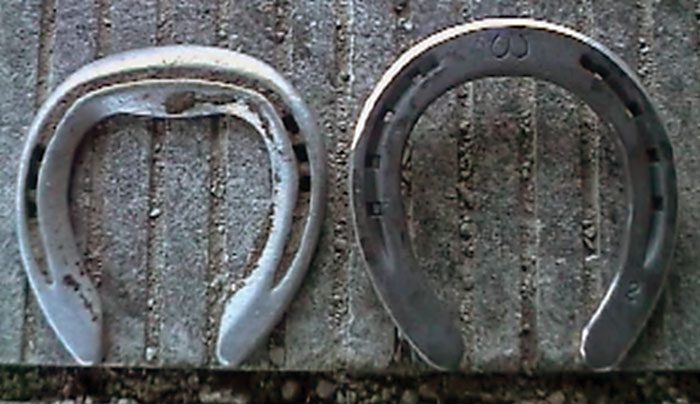American Farriers Journal
American Farriers Journal is the “hands-on” magazine for professional farriers, equine veterinarians and horse care product and service buyers.

SHOE SHAPE DIFFERENCES. Note the differences between the Natural Balance shoe (left) and a traditional shaped shoe that is shown at right.
THE DIFFERENCES of opinions involved in the Natural Balance vs. the conventional shoeing theories are so vast that we need to find some type of neutral ground. But before that can occur, both shoeing methods need to be dissected and compared.
Known among Natural Balance advocates as four-point shoeing, extreme breakover, setting the shoe back and other terminology, the names are as varied as the methods used with this shoeing technique. However, the main objective of each method is the same — to relieve breakover and release tension on the deep digital flexor tendon, thus reducing stress on the distal sesamoid (navicular bone). The basic principle is that the shoe is set back at the toe with either a modified keg shoe or a Natural Balance shoe, with the widest point of the foot used as a guideline for the center of articulation.
The main problem with this type of shoeing is that it does not suit every foot style since different foot types are dictated by the shape of the coffin bone. In essence, the shape of the hoof capsule is dictated by the coffin bone, which is dictated by the conformation of the horse.
I divide my hoof shapes into three categories of normal, wide and narrow. The variations of these shapes would be the medial or lateral deviations of the coffin bone…